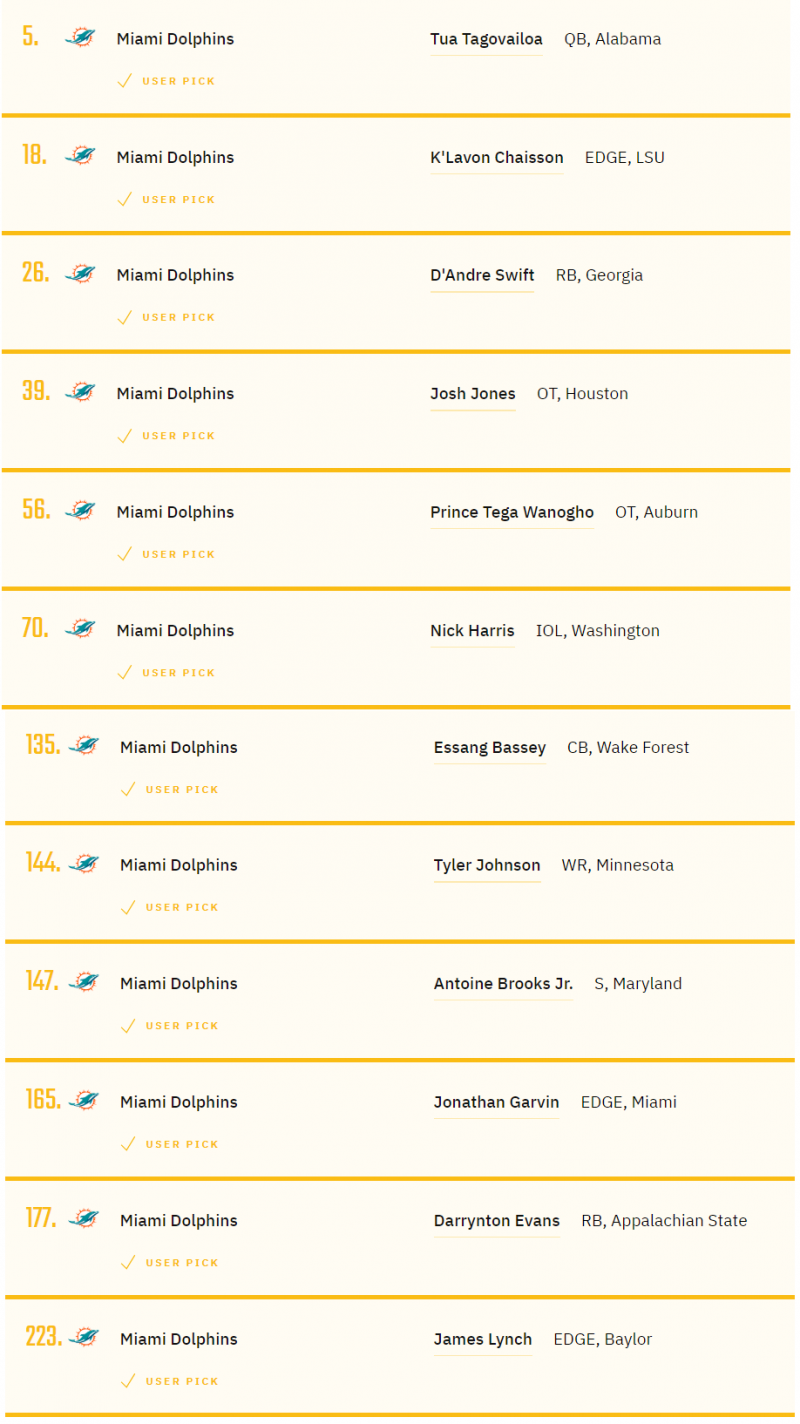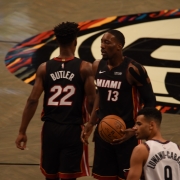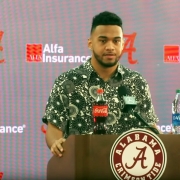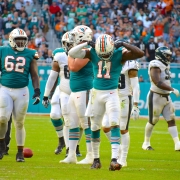Back in late September. I put together an offseason plan that would revamp the 2020 Miami Dolphins. First, I looked at how they should tackle free agency. I gave Miami some stud defensive players and finally (hopefully) fixed the offensive line. Then, I immediately dove in and addressed the 2020 NFL draft, such as it was at the time. Naturally, some picks were deemed unrealistic. The idea that Miami would be able to snag both Tua Tagovailoa and Chase Young in the same draft is ridiculous now. Undoubtedly, Fanspeak has addressed this in their mock drafts. The plan also hinged on the Dolphins having the #1 overall pick. This is no longer the case, as Brian Flores refused to quit and dragged his players to a remarkable five wins.
Whether you agree with Flores or even support Flores in that effort, the undeniable fact is those wins had an impact on Miami’s draft position. Now, they pick fifth overall instead of first overall. Also, we are now aware of who has declared for the draft and who has decided to go back to school for another season. This will change how things play out. So now that things are pretty much set in stone, the time has come to redo this plan.
Same as before, focus will be placed on free agency first. Who should Miami give large contracts to? Who should be moved on from? This plan will also assume that things go unchanged regarding the expiring Collective Bargaining Agreement, and cap will still carry over into the next season. If it turns out this will not be the case, simply rework the contracts to be heavily front-loaded. So without further ado, let’s get started with a brand new offseason plan.
Quarterback
Once again, the draft portion of this offseason plan is where the vast majority of this discussion will be had. But there is one massive difference between this plan and the previous one. Previously, Ryan Fitzpatrick was listed as being an offseason cut. But now he’s not only going to stick around, he’s actually going to start the 2020 season.
There was hope that Josh Rosen would turn out to be a viable starter with a year of seasoning. But after three starts, it was clear that Rosen didn’t really grasp what was going on. His throws were errant, he looked distinctly uncomfortable, and the team simply wasn’t rallying around him. True, Fitzpatrick wasn’t making a good case for himself when the season started, but that all changed as soon as Rosen was benched and he came back in.
Bizarrely enough, the Dolphins rode that wave all the way to five wins in a season where the expectation was an easy 0-16. Did it ruin their tanking efforts? That assumes they were ever tanking in the first place. All signs point to Fitzpatrick returning to play in 2020, and he will not only start, he will have the duty of mentoring not one, but two young quarterbacks.
Make no mistake, Miami will draft a quarterback at some point in this upcoming draft. But that doesn’t mean they’re about to cut ties with Josh Rosen. Even entering his third season in the NFL, he’s still younger than consensus top pick Joe Burrow. To give up on Rosen already would be very foolish. He’ll compete for the starting job all over again this season. That makes the 2020 QB lineup: Fitzpatrick, Rosen, Rookie QB.
Running back
As it turns out, Kenyan Drake got traded before the season could end, and immediately he made an impact with his new team. In eight games with the Arizona Cardinals, Drake ran the ball 123 times for 643 yards, and eight touchdowns, averaging 5.2 yards a carry. He also added 28 receptions for 171 yards. Clearly, the Cardinals found use for him whereas the Dolphins were unwilling to give him the ball for some unknown reason. If nothing else, Miami is likely to get a fifth round pick thanks to Drake’s success, but it’s still disappointing they never tried to make him the star he could be.
So what should the Dolphins do now? In a perfect world, they would sign impending free agent Derrick Henry to a big contract. But the world is not perfect. Miami doesn’t project to be big spenders, but it’s going to be hard to resist that temptation with all the elite talent shaking loose this offseason. Henry would give instant smashmouth football potential, but as the league’s leading rusher, he’s got a lot of tread on his wheels and he’ll command a huge contract.
Under normal circumstances, I would forgo conventional wisdom and write this as if I were the Dolphins GM. But given there’s essentially zero chance Miami splurges on Henry, or Chargers RB Melvin Gordon, I will make an exception in this case. The Dolphins won’t be spending on running back in free agency unless it’s a cheap role player. Look to the draft for a running back recharge.
Wide Receiver
In the previous offseason plan, Miami parted ways with DeVante Parker to save an extra $5 million in cap space. But after seeing what he did in 2019 with Ryan Fitzpatrick at QB and Brian Flores at head coach, that’s no longer the plan. In fact, Parker is now the focal point of the plan. He shattered the preconceived notion fans had of him. He put together a Pro Bowl worthy season. And he made Stephon Gilmore look like a fool.
His reward? A brand new four-year, $30.5 million dollar deal that will keep him in Miami through 2023.
With that done, there’s no need to make Amari Cooper the highest-paid wide receiver in the NFL. Let the Dallas Cowboys figure out how to sort out their salary issues. Instead, the Dolphins can potentially stand pat with the receivers they already have. Currently, that’s Parker, Preston Williams, Jakeem Grant, Albert Wilson, and Isaiah Ford.
Williams has the potential to be an excellent wide receiver, if he can just work on his hands. Drops plagued him during his rookie season, similar to Grant who also struggled making catches. As for Wilson, Miami can still save a lot by releasing him. But by the end of the season, Wilson was starting to look like his old self. The better option may actually be to stand pat and let him play out his contract.
This WR corps is the strongest part of the team by far. The only reason Miami would need to spend money at this position is if someone gets hurt midseason. Even then, it’s more likely other options will be available via practice squad or the draft.
Tight End
The emergence of Mike Gesicki has made the tight end position much less of a priority than it was at the time of the previous plan. That said, it’s clear Nick O’Leary will not return to the team. So that once again leaves the Dolphins with only Gesicki and Durham Smythe under contract at tight end for 2020. They do have Chris Myarick on the practice squad, but it remains to be seen how much of a role he can play.
Miami can still use a blocking tight end, however, and maybe they’ll be content to stick with Smythe. However, if they’re looking for someone to step in and act as a veteran voice, Marcedes Lewis may be a cheap option. He’ll be 36 in May, and he has some ability as a dual threat TE even at his age. For the past two seasons, Lewis has signed one-year, $2.1 million dollar deals to remain in Green Bay, and reports indicate he plans to play again in 2020.
As much as he says he loves Green Bay, the promise of a little extra cash in his pocket might be enough to lure him back into a warmer climate. Give the man a one-year, $4 million dollar deal and let him mentor the young guys in the locker room. As much as Gesicki has improved under Flores, there’s no reason to be content with it. Maybe Lewis can help Gesicki reach a whole new level.
They’re going to need bodies at tight end anyway, might as well make it one proven to be productive. Sure, he’s old. But he’s not being brought in to be a band-aid or a stopgap. Merely depth and a mentor. That’s worth spending a little extra.
Offensive Line
Virtually nothing changes from the previous plan to this one. The Miami Dolphins still need an offensive line, an elite one preferably. And with all the talented players shaking loose in free agency, this is where it’s time to spend big. Once again, if anyone will remain on the line from last year to this year, it’ll be Jesse Davis and Michael Deiter.
However, there’s a twist. Instead of remaining the starting right tackle, Davis will now be retained as a versatile backup. This means the Dolphins should dip into the free agent pool for that as well. Who do they pursue?
Jack Conklin.
After an excellent year as a part of the Tennessee Titans offensive line, there will be teams looking to pay Conklin a hefty sum. Naturally, the Titans will be looking to keep their offensive line intact as best as they can. Their cohesiveness had a lot to do with their playoff run, giving Derrick Henry room to become the league’s leading rusher. But after Tennessee declined Conklin’s fifth-year option, they now have to bid for him.
In all fairness, Conklin has said he wants to be back with the Titans. So maybe if they give him a fair contract offer, he’ll accept it. But it’s highly unlikely that he won’t at least see what he can get on the open market. Spotrac speculates that Conklin’s market value will be around $15 million a year annually. So, Miami should offer around $17 million annually and see what he says. He would immediately make a massive impact in the run game, which is big since the Dolphins couldn’t run the ball to save their lives in 2019.
After that? Things remain largely the same as the previous plan.
In speaking with Five Reasons’ own Chris Kouffman, the idea that the Dolphins could (and should) spend to sign Patriots free agent Joe Thuney to play left guard is running rampant. I can understand the appeal. Thuney is easily a top five guard in the NFL. His presence would fix the left guard position for years to come. However, I still believe that the best course of action is to sign Brandon Scherff to play right guard instead.
There’s no doubt that Scherff and Thuney are going to be watching each other’s contract negotiations closely. They’re both going to want to be the NFL’s highest paid interior lineman, and whoever signs first will set the baseline. The same contract details as the previous offseason plan should suffice. Give him a 5-year, $82.5 million dollar deal and put him next to Conklin. Running backs will run free for years to come.
Now, the reason Scherff is pursued over Thuney is because Miami already has a left guard they’re trying to develop in Michael Deiter. He struggled mightily in his rookie season, but signing Thuney implies they’re already giving up on their third-round pick. What the Dolphins should do, once again, is sign Anthony Castanzo for two years at $10 million a piece. He’ll be older, but he’s consistently good. He will be able to support Deiter on the left side as he continues his development. That is, until Miami drafts or develops a new left tackle.
The line isn’t complete just yet, but stay tuned.
Defensive Line
2019 made one thing abundantly clear. The Dolphins need a stud pass rusher. Getting pressure on the quarterback was a pipe dream. It speaks volumes that Taco Charlton, a waiver wire pickup who was later benched for unknown reasons, was the team’s sack leader.
He had five sacks.
Playing defense is nearly impossible with that level of QB pressure. So it’s time for Miami to spend on one.
All signs point to Yannick Ngakoue wanting to test the free agent market. After racking up eight sacks in 2019 (tied for his worst total since his rookie season) and forcing four fumbles, who can blame him? He’s entering the prime of his career, looking for a massive pay day. Given the Dolphins’ need for an elite pass rusher, Ngakoue fits the bill. Just like the previous plan, give him six years and $132 million dollars. That will be the highest total in the NFL for pass rushers. One side taken care of.
Charles Harris isn’t going anywhere, for better or worse. Taco Charlton’s future is up in the air, but at worst he’s on the same level as Andre Branch, so hopefully Miami will keep him. After that, the Dolphins will likely comb waiver wires and the draft for more pass rushing. More on that later.
As for the interior, Christian Wilkins didn’t wow fans with his flashy plays. Some even considered him a rookie bust. But Wilkins quietly proved to be someone who can easily contribute. At Clemson, his job was to open the way for other players to make plays. That’s mostly what he did in his rookie season as well. While other draftees were making flashy plays that showed up on highlight reels, Wilkins was doing dirty work.
That is what makes finding dynamic pass rushers even more imperative. Wilkins won’t be appreciated until there’s someone who can take advantage of the work he puts in. As for Davon Godchaux, he’s proving to be one of the bigger steals of the draft. Again, he’s by no means a superstar, but he’s consistently good and is a viable starter. No need to spend big in free agency at DT.
However, it is worth mentioning that a nose tackle should still be looked into. Previously, I suggested Danny Shelton. Now, however, I would simply bring back John Jenkins. Between him and young linebacker Raekwon McMillan, Miami’s run defense looked the best it has in years. The numbers won’t reflect that, but watching the games shows how they made a good team.
So bring back Jenkins, sign Ngakoue, draft another pass rusher, the defensive line should be good to go.
Linebacker
What really needs to be done here? Surely the combination of Jerome Baker, Raekwon McMillan and Sam Egauvoen is good enough of a trio, right? Well, yes and no. While Eguavoen looked impressive in camp and preseason, the regular season saw a significant drop off. Was he bad? Not really. But he wasn’t good either. His greatest skill is in coverage. In talking with Chris Kouffman, I agree with his assessment that Eguavoen is best suited as a situational coverage linebacker.
But that means the Dolphins still need another all around linebacker. One who can do it all, and do it well. This is where Kyle Van Noy comes in. The New England Patriots linebacker is looking for a brand new contract, and the Patriots are notorious for not paying big contracts. Van Noy recently stated in an interview that he would love to remain a Patriot for the rest of his career. But he also stated in the same breath that he knows it’s a business and his play has been consistent.
That’s the truth.
Van Noy loves Boston, but a lowball offer from New England won’t be enough to satiate him. If Miami pays him money, he’d probably be willing to head south. Instantly, the linebacker corps goes from good to potentially great with Van Noy. Making the Dolphins even more attractive is Brian Flores. He and Van Noy obviously have history.
So sign him, make Eguavoen a coverage specialist, and then re-sign Vince Biegel. He’s a restricted free agent, and flashed numerous times throughout the season. Trading Kiko Alonso for him turned out to be a win for both sides. Of course, Andrew Van Ginkel is still there, and with Mike Hull likely to come off the PUP list finally, the LB depth is set.
Cornerback
By this time, all signs point to Xavien Howard staying with the Dolphins after his domestic violence incident. He’ll likely get suspended for a certain length of time, but barring any other issues, he’s staying. This means we’re right back to looking for a number two cornerback who can also be a number one while Howard serves his suspension.
Once again, the answer is Byron Jones.
With all the money the Cowboys have tied into their offensive line, they have a serious problem. They need to pay Amari Cooper a big contract, which I originally had Miami giving him. But assuming he’s going to stay in Dallas, that means they need to pay Cooper, and of course their franchise QB Dak Prescott. That contract is going to be utterly massive.
That leaves the door wide open for Jones to test the free agent market, and the Dolphins can bring him in to create the cornerback duo that fans have been craving since Patrick Surtain and Sam Madison’s time. Maybe Jones wants to be paid as the league’s top cornerback, and that’s fine. Jones ranked as the 12th best corner according to ProFootballFocus grades in 2019. He deserves a lot of money.
The team’s third corner without a doubt is Nik Needham. That development is something no one saw coming. No one except for the coaching staff, that is. After the miserable preseason Needham had, fans were ready for him to hit the road. Yet, the team decided to let him stay. Boy were we wrong on him. Throughout the season, Needham showed staggering development at cornerback. Is he starter potential? That remains to be seen. But if he can come off the bench for dime and quarters packages? That’s the best case scenario.
Now there is something else to consider. The Dolphins essentially traded cap space to the Los Angeles Rams for a fifth round pick and veteran cornerback Aqib Talib. That trade deadline deal put the injured Talib right onto the injured reserve list, and he never suited up in a Miami uniform. But if anyone knows what Talib offers a team in the locker room, it’s Brian Flores. They worked together during their New England tenures. At nearly 34 years old, Talib may not be lockdown caliber anymore, but he can definitely still contribute, as a mentor if nothing else. Give him $6 million to hang around and show the league what he still has to offer.
Imagine this cornerback group:
Xavien Howard.
Byron Jones.
Aqib Talib.
Nik Needham.
Jomal Wiltz (Nickel).
Could definitely be worse. Wiltz showed flashes throughout the season as well. On top of all that, Cordrea Tankersley should be coming off the PUP list after all this time. Flores will get an opportunity to see what the Clemson standout is made of. Add any young undrafted free agents Flores wants to try and nurture, and Miami’s corners should be set.
Safety
Finally we end with the safety position once more. This time, things are getting interesting. With all the injuries in the secondary, Flores needed to improvise. One of those improvisations was to move CB Eric Rowe over to safety. Ironically, Rowe thrived at the position, and he was rewarded with a contract extension through 2022. But now what is Rowe’s role in the defense? Both Reshad Jones and Bobby McCain are still under contract, and both contracts are hard to escape right now.
Plus, according to the Miami Herald’s Barry Jackson, the current plan is to keep McCain at safety, rather than move him back to slot corner where he made a name for himself. But if that’s the plan, is there room for all three of them?
Cutting Reshad Jones now costs Miami about $8 million in dead cap space, with only $7.5 in savings. That’s a net loss the Dolphins shouldn’t even think about. Jones is a solid safety. When he’s healthy, he’s more than solid. But he is getting older, and no teams seem interested in taking on his contract. Barring Miami deciding to bite the bullet, he’s likely staying for another year.
As for McCain, his contract is even harder to swallow. Cutting him saves only about $1 million in cap space while killing about $5 million. That’s just hard to come to terms with.
So assuming all three players stay on the roster, there are a few options to choose from. The first is that the Dolphins bite the bullet and move on from either Jones or McCain regardless of their contract situation. The likely candidate in that case is Jones as he’s getting older and hasn’t played a full season since 2017.
Option two is Miami uses a three safety scheme that features Jones, McCain and Rowe on the field at the same time. They did that some in 2019, but more would be required. Jones is best suited as an in-the-box safety, staying near the line of scrimmage and disrupting offenses with his playmaking ability. That leaves McCain and Rowe to cover tight ends and provide backup to the corners.
The third option (and arguably best, in my opinion) is to simply change the thought process and move McCain back to slot cornerback. That may not be the current plan, but maybe it should be. McCain became one of the highest paid slot corners in the NFL because of his performance at that position. Him making the move to safety was met with a lot of skepticism. His performance at safety seemed to justify that. McCain didn’t display the speed or the physicality necessary to be a top end safety. He lost several matchups and even looked confused at times regarding where he was supposed to be.
To make a long segment short, there’s no longer a need to sign Devin McCourty as a free agent. The Dolphins already have a logjam that could become worse if they find a young player worth developing. It’s a good problem to have, but it still needs some form of resolution. Miami shouldn’t spend money at safety if they already don’t have enough space for who’s there.
As far as depth goes, the Dolphins need to bring Walt Aikens back. As a special teams ace, he’s invaluable. He’s also becoming a fan favorite, and a positive personality in the locker room. Even when things were down, Aikens was there to keep everyone smiling. That kind of influence has a bigger impact than anyone realizes.
So that’s it for the new offseason plan in free agency. But Miami is nowhere near finished. Now, it’s time for the draft.
Luis Sung has covered the Miami Dolphins for numerous outlets such as Dolphins Wire for six years. Follow him on Twitter: @LuisDSung
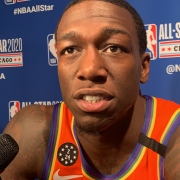
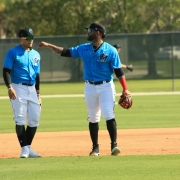
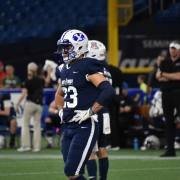
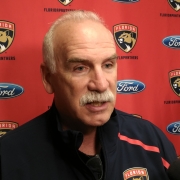
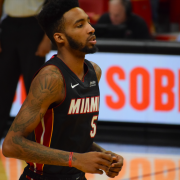
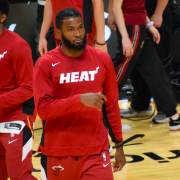
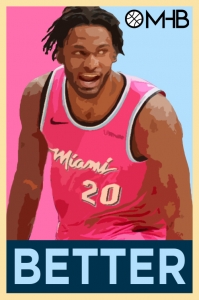
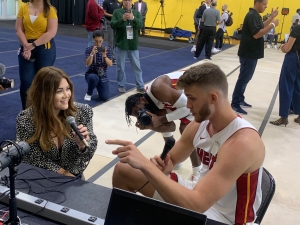
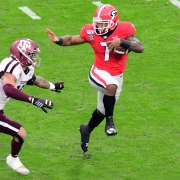 Perry McIntyre - Georgia Athletics
Perry McIntyre - Georgia Athletics